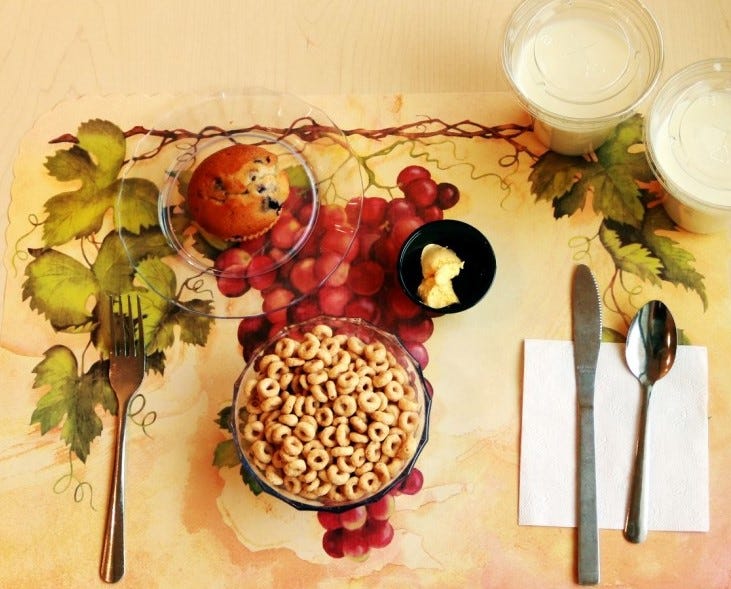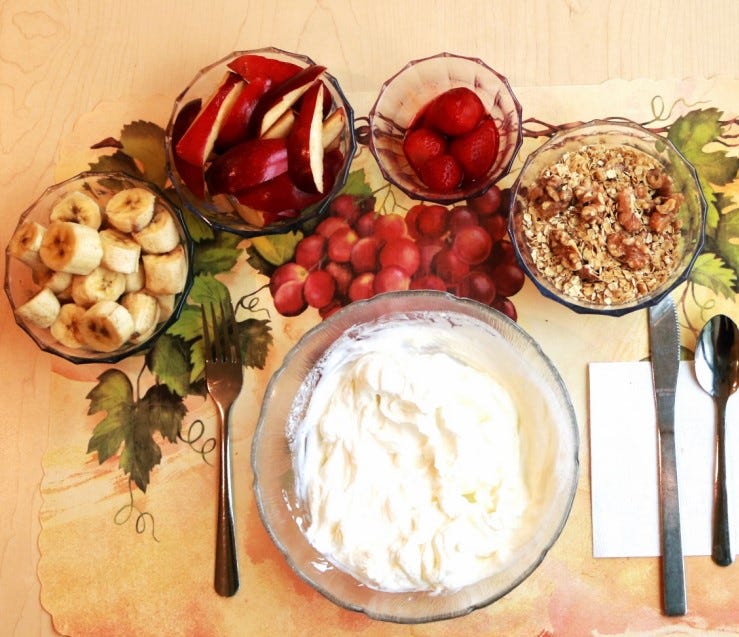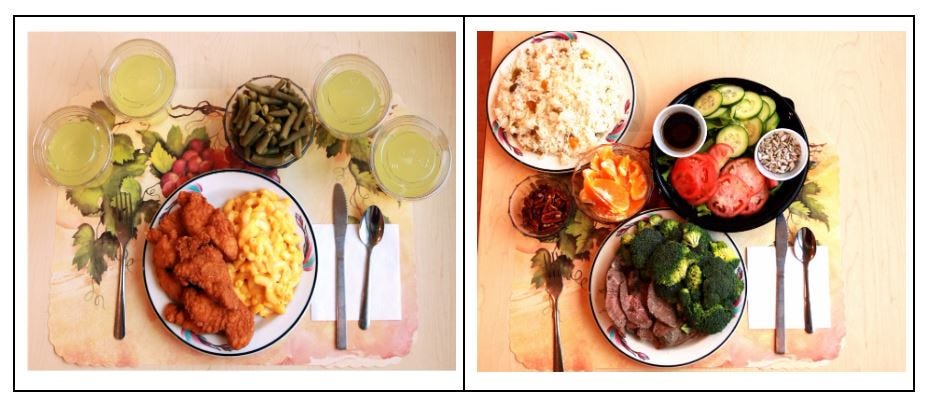What not to eat
There are too many wrong ideas about what humans should consume
Humans are getting fatter and unhealthier. Everywhere. Whether in Britain, Brazil, America or even in Japan, humans are bigger than they were in the 1970s and 1980s1,2.
It is hard to escape a daily assault of dietary advice, whether from well-meaning governments or self-help dietary gurus with a book to sell. And humans are obsessed with food. Chefs are celebrities. Cooking and diet books are at the top of best-seller lists. The food fads are exhausting. We have been sold low-carb diets like South Beach, Atkins, and paleo diets. Governments, meanwhile, tell us to get a varied diet with different major food categories. Take a look at MyPlate, which gives advice on the proportions of protein, vegetables, grains, fruits, and dairy. There are traffic lights and calorie counts on foods in other places. Fights over calorie counts in restauarants. None of it seems to be helping. Rates of diabetes and high blood pressure continue to climb.
This week, for an article in The Economist3, I spoke to Herman Pontzer, a professor of evolutionary anthropology and global health. He has spent a lot of time looking at hunter-gatherer diets to figure out what our ancestors really ate. The first shocker: is not a meat-heavy and low-carb diet as one might have been led to believe by the notion of stone-age eating. Our ancestors likely ate far more plants and starchy material than we had appreciated. This conclusion comes from archeological evidence as well as work on modern-day hunter-gatherer tribes.
Modern tribes tell us more. One group for which there is particularly good data are the hunter-gathers, the Hadza—a Tanzanian tribe. Forty years of food data tells us that on a month-to-month basis their diet is extremely varied. What they eat, in terms of plants versus meats, varies widely according to the season and the year. They eat what is available. Over time this particular tribe averages a 50:50 plant-to-meat diet. But other tribes, in other locations, will eat more or less meat. “The idea that the low-carb is the natural human diet doesn’t make sense,” says Dr Pontzer.
“There are a few species that are actually evolved to thrive on really diverse diets. It is not a bug, it is a feature. It has always been that way. Humans have always been very good at eating a range of things and being OK with it”, he says.
Our physiology tells us a lot, too. Our gut and teeth reveal that humans are omnivores, not herbivores or carnivores. Dr Pontzer says that the animals we most resemble are scavengers. Like hyaenas or buzzards. Our low-pH stomach acid is one indicator of our origins as scavengers because this is seen found in animals that are eating carcasses with a substantial load of pathogens4. And if anyone is thinking that hunter-gatherers are so lithe because of all the exercise they do, think again. The Hadza do not burn any more calories than modern-day humans do. (For more read this article, or read Dr Pontzer’s book).

The simple answer to why humans are getting fat is processed foods. In 2019 Kevin Hall and colleagues at the National Institutes of Health in America conducted a 28-day study of 20 overweight middle-aged men and women. These volunteers were sequestered in a research centre. The two groups could eat as much food as they wished, but one group had mostly processed foods, the others mostly unprocessed foods. Over a 14-day period, those on the processed diet ate more than 500 calories more a day5.
What did the processed foods menu look like? On day 1, breakfast was honey nut cheerios, blueberry muffin and milk. Lunch was beef ravioli, parmesan, two slices of white bread, diet lemonade, and oatmeal raisin cookies. Supper was steak, gravy, mashed potatoes, sweet corn, diet lemonade, and low-fat chocolate milk. (For a longer list of the sort of daily horrors on this diet see footnote6).
So what about the unprocessed menu? Day 1, was plain greek yogurt, strawberries, bananas, walnuts, salt and olive oil, and apple slices with freshly squeezed lemon. Lunch was a spinach salad with chicken breast, apple slices, bulgur wheat, sunflower seeds and grapes. The vinaigrette was olive oil, fresh lemon juice, apple cider vinegar, ground mustard seed, black pepper, and salt. Supper was a beef tender roast, rice pilaf (with garlic, onions, sweet peppers and olive oil), steamed brocolli, a side salad, orange slices, and pecans. (A longer list of foods that were on the unprocessed list is here,7 and the full diet in all its pictorial glory, and horror, can be found here8.)
They were also allowed as many snacks as they wished. Again, what was available to the two groups was very different.
What this suggests is that it is the degree to which we are consuming processed foods is what is driving overconsumption—not the ratio of proteins to carbs we consume.
“We have engineered these foods to be completely impossible to stop eating. We know how it affects our brains. It lights up our reward systems in ways that you don’t get with hunter-gatherer foods.”
In his time studying the Hadza, Dr Pontzer has spent time eating with them. Their foods are mostly bland. There is a fibrous tuber that is roasted, chewed to extract the nutritional value, and the remainder spat out. There is boiled warthog. There are berries that are entirely unlike what we would find in the supermarket. Dry with lots of seeds inside. Then there is zebra, cooked directly in the fire with a taste like ashes, and pink inside. A little nicer, though, is local honey and the fruit of the baobab tree. This is tangy and has an almost dehydrated crunchy texture.
The lesson is that you don’t have to calorie count to stay slim, but you do need to eat less palatable foods. Certainly getting plenty of fibre is good, and vegetables and nuts, and grains have valuable nutrients. But the underlying problem is that processed foods hijack our biology and make us eat too much. How we begin to solve this problem is one of the great conundrums of our time. Any ideas for how we can solve this problem, pop them in the chat please.
The global obesity pandemic. The Lancet, August 2011.
National, regional, and global trends in body-mass indext since 1980. The Lancet, February 2011.
Other parts of the processed diet included croissants, turkey sausage, deli turkey, cheddar, refried beans, sour cream, salsa, tortilla, peaches in syrup, fig newtons, egg muffins with turkey, tater tots, chicken nuggets, turkey meatballs, scrambled egg (made from liquid), orange juice, pork sausages, hot dogs, potato chips, blueberry yoghurt, cranberry juice, bagels, turkey bacon, spam, beef and bean chilli, eggo pancakes, maple syrup, tater tots, apple juice, macaroni cheese. And so on.
Unprocessed diet included scrambled eggs made of fresh eggs. a hash brown mix of fresh potatoes, garlic, paprika, turmeric cream, and onions, baked sweet potato, milk (2% or skim), avocado, corn (from frozen), tomatoes, carrots, lettuce, oatmeal, blueberries, almonds, peppers, green beans (from frozen not canned), cucumber, black bean hummus cooked from dried beans, spinach and onion omelette, sweet potato hash, baked cod filet, baked potato, coconut, barley, prawns, quinoa, salmon, penne pasta.






Great post, Natasha, thank you. As I understand it... with our energy systems, the food system has become principally a vehicle for profits for the fossil fuel industry. Regenerative agriculture is far more profitable for farmers, but of course not at all profitable for big oil. Regenerative agriculture may sometimes deliver lower bulk yields, but delivers higher nutritional yields. The food sector problems are entirely related to our energy sector problems: flawed democracies (in the US, UK and South Africa, my home) and neoliberal ideology leading to woeful under-regulation of a now criminal industry. So the fix is lodged not in the food system itself but in political reform. In the UK, you may have a shot at this if Labour follows through on proportional representation (hopefully not straight PR which is as useless as FPTP).
Excellent post, Natasha. Processed foods clearly lead to overconsumption.
But I think we also need to take into account economic factors. Almost two decades ago health economist David Cutler and two colleagues at Harvard wrote a great article in the Journal of Economic Perspectives seeking to explain rising obesity among Americans. They explained how an array of technical changes had cut the time and lowered the costs in preparing foods eg microwave ovens and prepared ingredients such as French fries. Using time diaries they found that Americans had responded to the lower "time price" of food not by eating more at set meals but by having more snacks. I know the study you cited allowed people eating the non-processed foods to snack, but snacking is much more calorific nowadays. Another economic dimension is that processed food is so often cheaper.